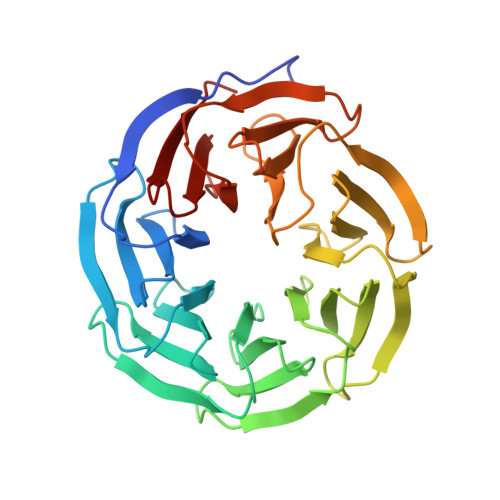Displacement of WDR5 from Chromatin by a WIN Site Inhibitor with Picomolar Affinity.
Aho, E.R., Wang, J., Gogliotti, R.D., Howard, G.C., Phan, J., Acharya, P., Macdonald, J.D., Cheng, K., Lorey, S.L., Lu, B., Wenzel, S., Foshage, A.M., Alvarado, J., Wang, F., Shaw, J.G., Zhao, B., Weissmiller, A.M., Thomas, L.R., Vakoc, C.R., Hall, M.D., Hiebert, S.W., Liu, Q., Stauffer, S.R., Fesik, S.W., Tansey, W.P.(2019) Cell Rep 26: 2916-2928.e13
- PubMed: 30865883
- DOI: https://doi.org/10.1016/j.celrep.2019.02.047
- Primary Citation of Related Structures:
6DY7, 6DYA, 6E1Y, 6E1Z, 6E22, 6E23 - PubMed Abstract:
The chromatin-associated protein WDR5 is a promising target for pharmacological inhibition in cancer. Drug discovery efforts center on the blockade of the "WIN site" of WDR5, a well-defined pocket that is amenable to small molecule inhibition. Various cancer contexts have been proposed to be targets for WIN site inhibitors, but a lack of understanding of WDR5 target genes and of the primary effects of WIN site inhibitors hampers their utility. Here, by the discovery of potent WIN site inhibitors, we demonstrate that the WIN site links WDR5 to chromatin at a small cohort of loci, including a specific subset of ribosome protein genes. WIN site inhibitors rapidly displace WDR5 from chromatin and decrease the expression of associated genes, causing translational inhibition, nucleolar stress, and p53 induction. Our studies define a mode by which WDR5 engages chromatin and forecast that WIN site blockade could have utility against multiple cancer types.
Organizational Affiliation:
Department of Cell and Developmental Biology, Vanderbilt University School of Medicine, Nashville, TN 37232, USA.















